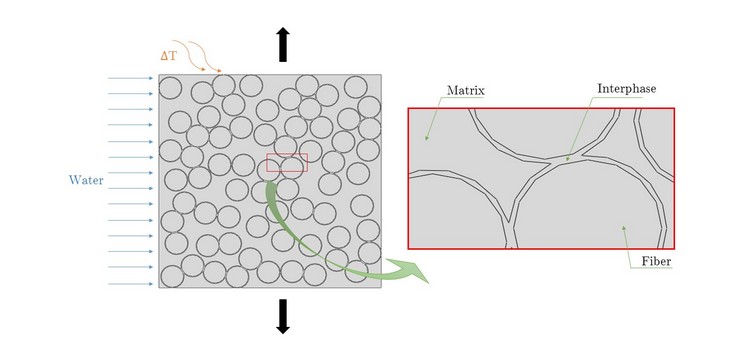

Beginning: November 2015
Defense: December 2018
Supervisor: JOLIFF Yoann
To reduce the long-term budget and the time enterprises spend on macroscopic specimens to predict the composite’s behavior, numerical models have become the upward trend solution. These kind of materials are used in various fields as transportation and energies (especially offshore wind turbines), in particular due to their ratio of good mechanical performance to low volume masses. However, under aggressive environments as humidity, high temperatures and other extreme conditions, their properties tumble down owing to matrix’s degradation.
Using a multi-scale approach, numerical micro-models executed in AbaqusTM software have been developed to predict the unidirectional fiber-reinforced composite’s mechanical behavior. Based on a Representative Volume Element (RVE) and a homogenization technique which employs the finite elements method (FEM), monotonic traction tests in composite’s cross section have been simulated and the behavior evidenced on a stress/strain curve has been validated by experimental data.
Based on obtained results, a complementary study is in progress to include the influence of environmental phenomena and the industrial impact. A software development that will allow sizing manufactures to predict the interphase’s thickness and rigidness is intended.
